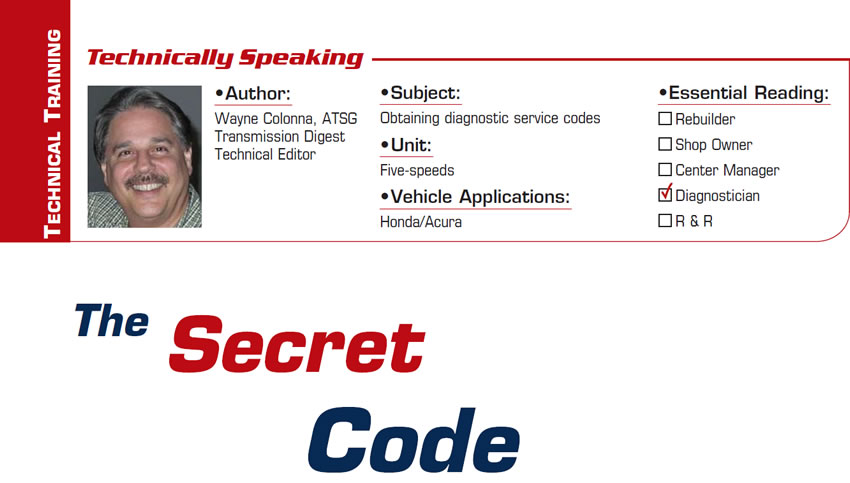New Transmission Technology Already Here, and More Coming
The old saying “The only thing that is constant is change” has never been more true than in today’s automotive manufacturing. We have seen the bankruptcy of Chrysler and General Motors, which 20 years ago was unthinkable. China has arrived as a manufacturing giant for all types of products and, with a billion plus people with rising income levels, is poised to become the largest new-car market on the globe. India and Brazil have leaped ahead economically and will become players in this market.
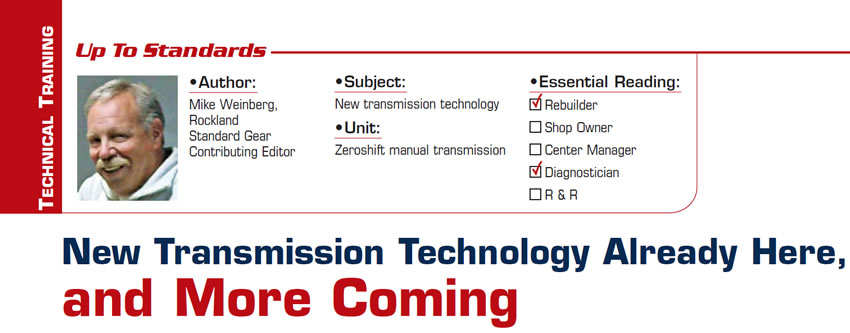
Many Happy Returns
Since so many previously dedicated transmission-rebuilding facilities have of late become more oriented toward repairing and servicing the entire vehicle, a new set of challenges has emerged. Leading the pack, believe it or not, is returns – parts and cores that need to go back to local parts stores for credit to the shop’s account.
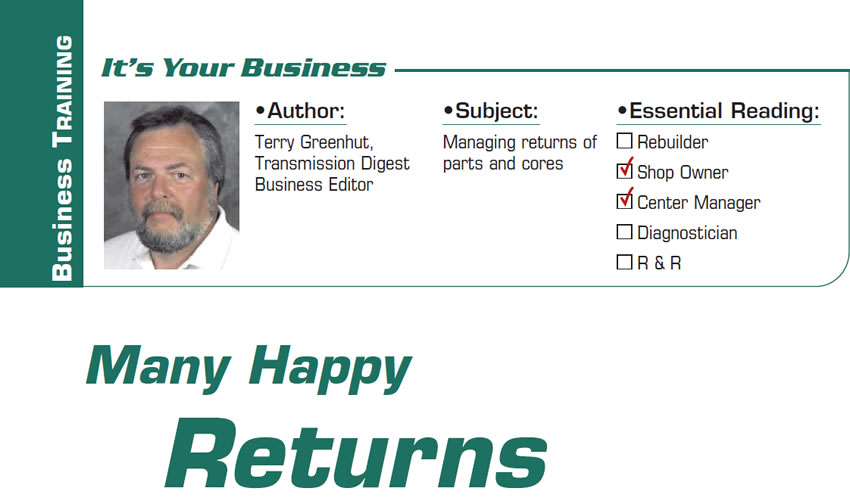
Serviceability Report: BMW
You, the technician, need a voice of reason. This article completes eight years of reporting on the basic construction of different carmakers, but we have never looked at BMW.
BMW is one of three car companies that make motorcycles; Honda and Suzuki also make motorcycles. Each company has a history of racing. At the track, making the car or motorcycle hard to fix is the wrong way to go. All three of these brands are well respected in reports on their two-wheeled machines, but how do American technicians view the four-wheeled BMWs?
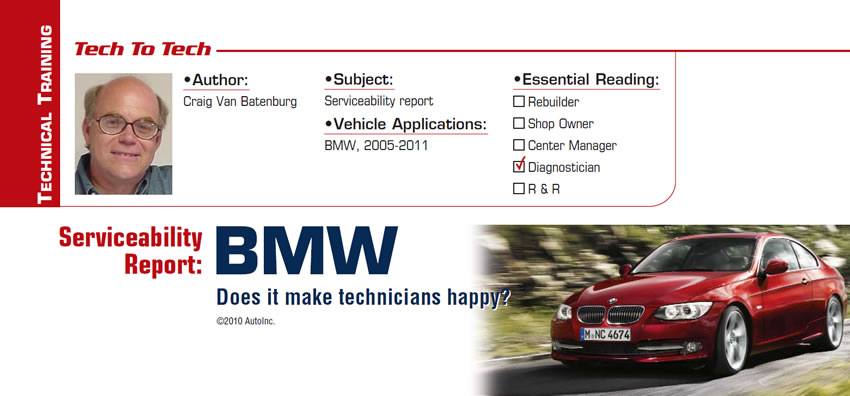
Why Resistance Checks Don’t Always Work
The example used here is a 1998 Oldsmobile Intrigue 3.8L with a 4T65-E transaxle that has a P0753 electrical code – 1-2 shift solenoid circuit – stored in the PCM; no other DTCs are present. The code will not set until the 1-2 solenoid is commanded to turn on. Now we have all seen the diagnostic flow chart for this code. No matter which repair-service publication you use they are all basically the same: Check resistance from here to here and here to here, from there to there and from here to ground, blah blah blah; I think you know what I mean. Then we print off a wiring diagram so we know what to look at.
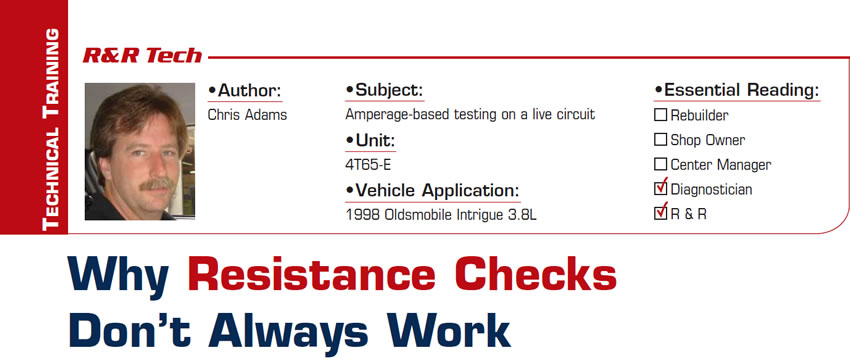
Close but No Cigar
The design of the OD planetary system in these transmissions allows for a 1:1 ratio from the input shaft to the center shaft until the overdrive band comes on and holds the sun gear. When this happens, the input shaft will spin slower than the center shaft.
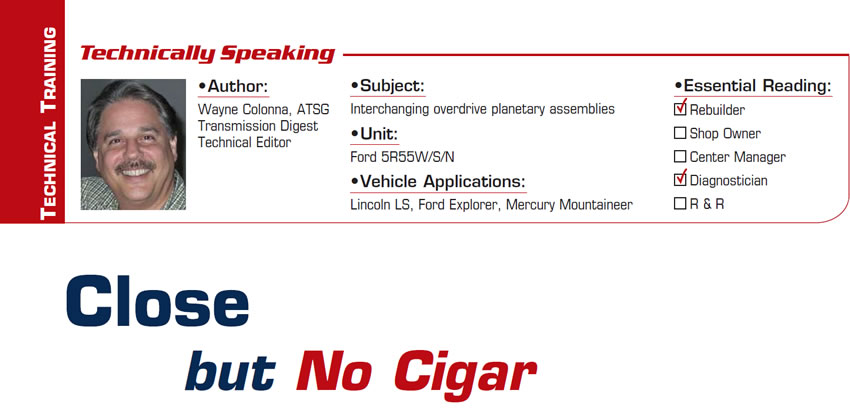
Walking the Thin Line
The late-model 518 is a prime example of this statement. When we get OE cores, the covers measure 0.160 to 0.165 inch thick if they are undamaged. The front covers can normally be cleaned up by machining off 0.005 inch of material. The challenge comes when we get a cover that was galled or damaged by a major lockup failure. In these instances, you may have to machine off as much as 0.015 inch, and at this point you end up with a cover that is only 0.145 inch to 0.150 inch thick. The question is, how far can you go? Where is the line between thick enough and no longer thick enough?
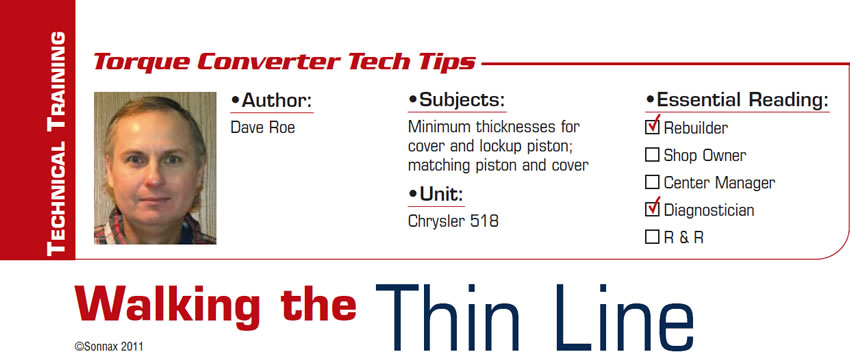
March 2011 Issue
In This Issue
45RFE • 545RFE
Dodge trucks: DTC P0715 and/or slow PRNDL response
45RFE/545RFE: Pulls forward in neutral
Jeep 545RFE: Misleading codes
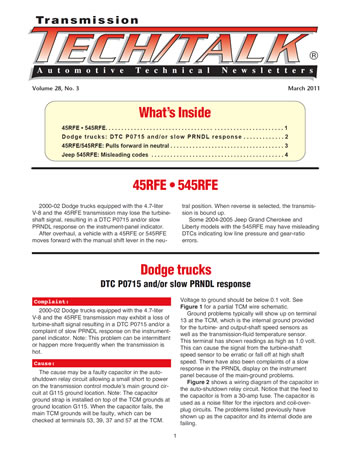
The New Venture Dodge 244 Transfer Case – Are You Confused Yet?
Historical evolution of this series of transfer cases starts with the 2000 models. Dodge Durango and Dakota for 2000 had available the 231HD, 241LD and 242, depending on the vehicle’s specific engine and transmission. In 2001, these vehicles were equipped with a 233 or 244. These are electrically shifted units, with the 233 being an electronic 231 and the 244 being an electronic 242.
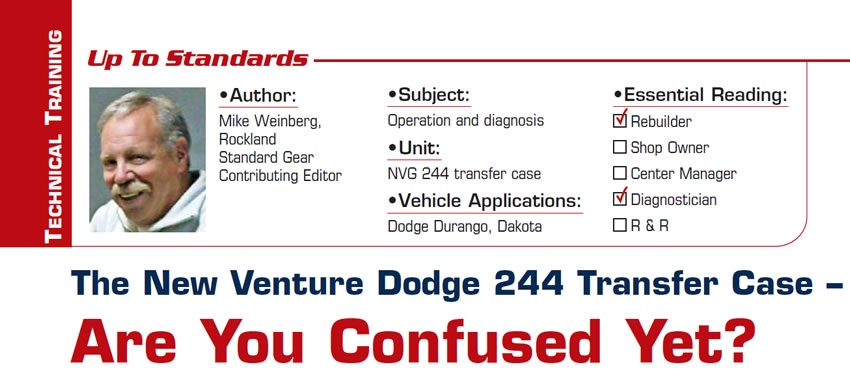
Ford’s Hybrid Transaxle, Part 1
Beginning with the 2005 model year Ford produced the Escape in a hybrid version (Figure 1) that was shared by the Mercury Mariner and Mazda Tribute, pretty much the same vehicle.
The transaxle in these vehicles is called the eCVT, and even though there are no pulleys or a drive belt its ability to change gear ratios in a stepless fashion using electric motors puts it into the CVT category. The hybrid system in these vehicles is considered a series/parallel system, which means it can take off on electric power only or it can use the internal-combustion engine (ICE).
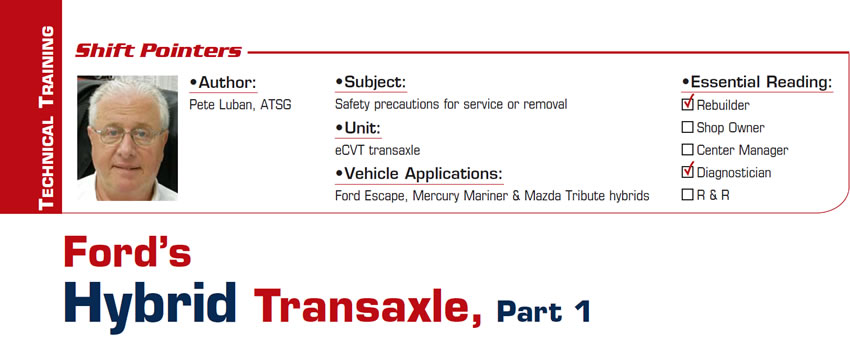
Harsh 1-2 Shift
I received a call from one of our wholesale customers, a shop that does general-repair and transmission work on occasion. He was looking for help on a 2004 Ford Freestar that he could not get to leave his shop. In fact, the vehicle had been to several other shops. He told me that another shop had worked on the transmission recently and that it was now back in his shop.
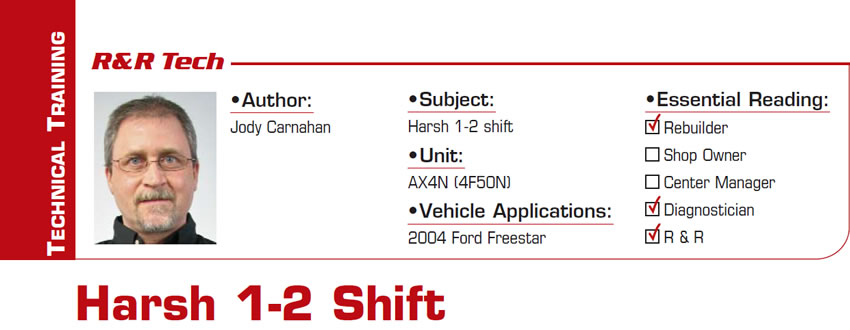
First Aid for Stators
In the early days of torque-converter rebuilding, most of the routine work involved re-machining thrust surfaces and then restoring clearances. Available service items such as thicker thrust washers and thicker end caps made this work relatively easy.
When the outer race of the one-way clutch became loose in the stator, rebuilders of the day faced a far-more-difficult challenge. The splined area on the outside diameter (OD) of the outer race broached a mirrored spline on the inside diameter (ID) of the stator when it was originally pressed into place (Figure 1).
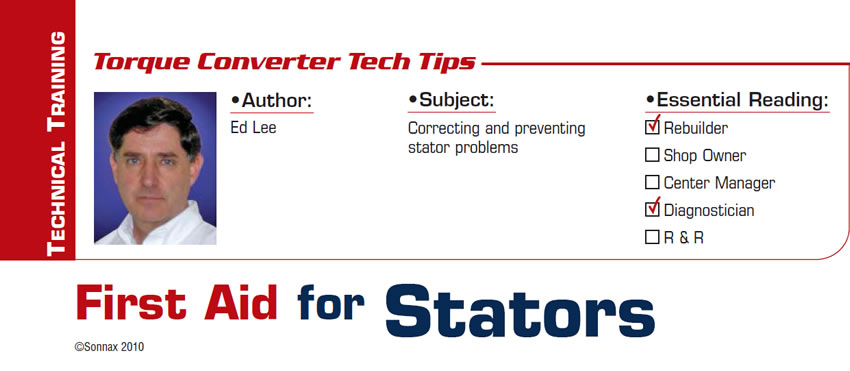
The Secret Code
When an electrical failure or some type of system failure occurs, prompting the computer to initiate a programmed failsafe condition for the transmission, it is essential for the technician to have the ability to obtain the diagnostic service code that accompanies the failsafe condition. Not having the ability to obtain this code or codes in essence causes the technician to be blind.
